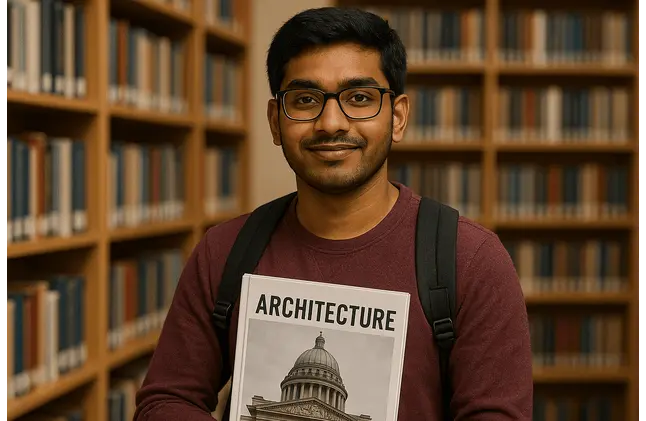
Architecture is an intriguing combination of design, science, and functionality. For Indian architecture students, it is crucial to understand both global and local schools of thought. Reading books is an excellent way to learn about architectural principles, history, and design thinking. Here are five essential books for architecture students in India.
- Architecture: Form, Space, and Order – Francis D.K. Ching
This book is a must-have for every architecture student. Francis D.K. Ching presents a visually stimulating exploration of architectural principles such as space, form, and design. The illustrative approach makes abstract concepts more accessible, making it an essential resource for students.
- Indian Architecture (Buddhist and Hindu Periods) – Percy Brown
Understanding India’s rich architectural heritage is essential for any student in the country. This book provides a detailed examination of Buddhist and Hindu architecture, covering styles, structures, and historical contexts. It’s an excellent guide for students interested in traditional Indian architecture.
- A Pattern Language: Towns, Buildings, Construction – Christopher Alexander
This book introduces a novel approach to architecture and urban design. Christopher Alexander and his co-authors present pragmatic design principles that can be applied at various scales, from individual buildings to entire cities. It inspires students to consider how spaces can be designed for human comfort and meaningful interaction.
- Modern Architecture: A Critical History – Kenneth Frampton
For those interested in contemporary architecture, this book offers a comprehensive overview of architectural theories and movements from the late 19th century to the present. It also explores how global influences have shaped contemporary Indian architecture, making it particularly valuable for Indian students.
- Architecture in India – Rahul Mehrotra
This book examines the evolution of India’s contemporary architecture since 1990, showcasing the achievements of modern Indian architects. It explores how traditional architectural techniques are blended with modern practices to create innovative designs that respond to India’s diverse terrain, cultural richness, and dynamic socio-political environment. Through the study of four distinct architectural genres and the work of over 60 architects, it reveals how these blended approaches shape the identity of modern Indian architecture.
Conclusion
These books provide architecture students in India with a strong foundation in both historical and contemporary architectural principles. Whether you’re eager to explore the rich tapestry of architectural history, stay updated on current trends, or master effective design methodologies, these books are invaluable companions on your architectural journey.
Do you have any favourite books that should be included in this list? Share them with us in the comments!

One Response
“The Architecture of Happiness” by Alain de Botton – A philosophical yet accessible take on how buildings influence our emotions.
“Towards a New Architecture” by Le Corbusier – A must-read to understand modernism and its revolutionary ideas.
“Design with Climate” by Victor Olgyay – Essential for those interested in sustainable and climate-responsive design.
“101 Things I Learned in Architecture School” by Matthew Frederick – Concise, clever, and full of practical wisdom.